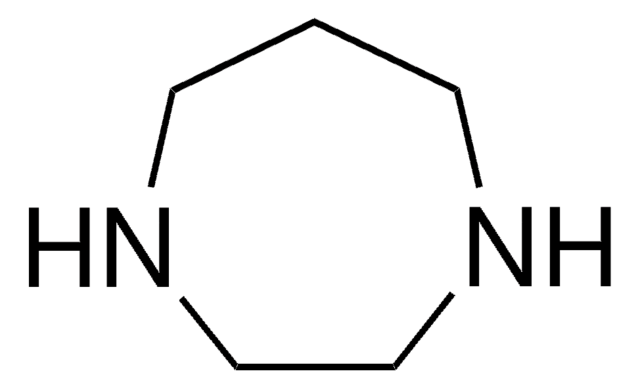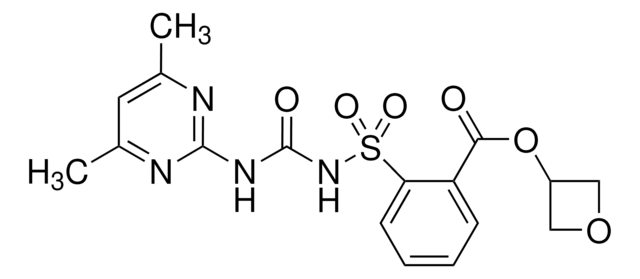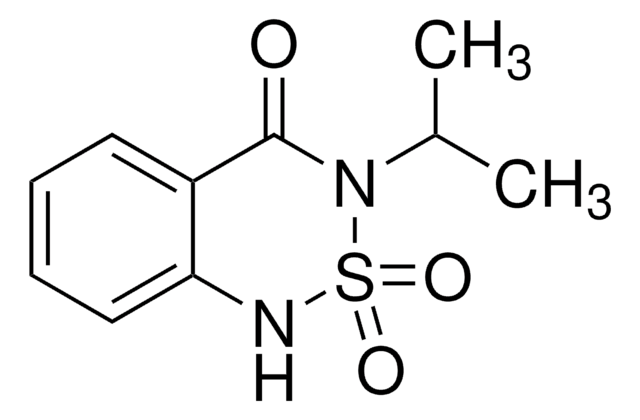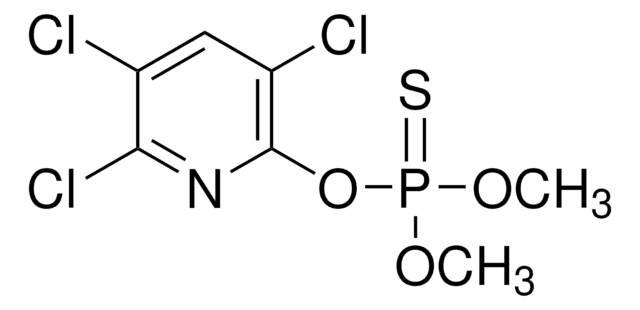53588
Homopiperazine-1,4-bis(2-ethanesulfonic acid)
Synonym(s):
Hexahydro-1H-1,4-diazepine-1,4-bis(2-ethanesulfonic acid), Homo-PIPES
Sign Into View Organizational & Contract Pricing
All Photos(1)
About This Item
Empirical Formula (Hill Notation):
C9H20N2O6S2
CAS Number:
Molecular Weight:
316.39
MDL number:
UNSPSC Code:
12352100
PubChem Substance ID:
NACRES:
NA.22
Recommended Products
form
solid
Quality Level
impurities
≤5% water
SMILES string
OS(=O)(=O)CCN1CCCN(CC1)CCS(O)(=O)=O
InChI
1S/C9H20N2O6S2/c12-18(13,14)8-6-10-2-1-3-11(5-4-10)7-9-19(15,16)17/h1-9H2,(H,12,13,14)(H,15,16,17)
InChI key
QZTMPPUJIVQNKS-UHFFFAOYSA-N
Looking for similar products? Visit Product Comparison Guide
Related Categories
General description
Homopiperazine-1,4-bis(2-ethanesulfonic acid) is used as a buffer in experiments involving plant cells at low pH.
Application
- Evaluation of buffers toxicity in plant cells: Homopiperazine-1,4-bis(2-ethanesulfonic acid) was evaluated for its suitability as a buffer in tobacco cell studies at low pH, highlighting its low toxicity and effectiveness in maintaining stable pH environments crucial for plant cell biology experiments (Borgo, 2017).
- Proteomic analysis under stress conditions: This buffer was used in maintaining pH during the proteomic analysis of radicles from seeds treated with aluminum, showcasing its utility in complex biological assays and environmental stress studies (Okekeogbu et al., 2014).
Signal Word
Danger
Hazard Statements
Precautionary Statements
Hazard Classifications
Acute Tox. 4 Dermal - Skin Corr. 1B
Storage Class Code
8A - Combustible corrosive hazardous materials
WGK
WGK 3
Flash Point(F)
Not applicable
Flash Point(C)
Not applicable
Personal Protective Equipment
dust mask type N95 (US), Eyeshields, Gloves
Choose from one of the most recent versions:
Already Own This Product?
Find documentation for the products that you have recently purchased in the Document Library.
Evaluation of buffers toxicity in tobacco cells: Homopiperazine-1, 4-bis (2-ethanesulfonic acid) is a suitable buffer for plant cells studies at low pH
Borgo L
Plant Physiology and Biochemistry, 115, 119-125 (2017)
Doris Pester et al.
PloS one, 7(3), e32583-e32583 (2012-03-14)
Pathogen entry through host blossoms is the predominant infection pathway of the gram-negative bacterium Erwinia amylovora leading to manifestation of the disease fire blight. Like in other economically important plant pathogens, E. amylovora pathogenicity depends on a type III secretion
Florian Schmidt et al.
Nature, 562(7727), 380-385 (2018-10-05)
The ability to record transcriptional events within a cell over time would help to elucidate how molecular events give rise to complex cellular behaviours and states. However, current molecular recording technologies capture only a small set of defined stimuli. Here
Our team of scientists has experience in all areas of research including Life Science, Material Science, Chemical Synthesis, Chromatography, Analytical and many others.
Contact Technical Service









